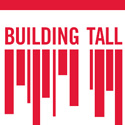Filter by
You must be a CTBUH Member to view this resource.

Wuhan Greenland Center
Complex
Completed
hotel / office / residential / serviced apartments
186
292
2,102
Note: Only buildings that have GPS coordinates recorded are displayed.
|
RANK
|
Name
|
Completion
|
Height
|
Floors
|
Function
|
|---|---|---|---|---|---|
| 1 | Wuhan Greenland Center | - |
636 m / 2,087 ft |
126 | Hotel / Residential / Office |
| 2 | Wuhan Greenland Center | 2023 |
476 m / 1,560 ft |
101 | Hotel / Serviced Apartments / Office |
1 February 2018 - Event
12 September 2017 - CTBUH Research

28 March 2018
Thursday, February 1, 2018. Chicago, United States of America. The Council on Tall Buildings and Urban Habitat (CTBUH) and the Chicago Architecture Foundation (CAF) held...

20 March 2020
CTBUH Research
This research paper undertakes a review of the 2012 report by the Council on Tall Buildings and Urban Habitat, “Tallest 20 in 2020: Entering the...

22 November 2019
A subsidiary of China’s largest construction group has suspended work on one of the nation’s tallest skyscrapers after the developer became the latest in a...

28 March 2018
Thursday, February 1, 2018. Chicago, United States of America. The Council on Tall Buildings and Urban Habitat (CTBUH) and the Chicago Architecture Foundation (CAF) held...

16 March 2017
Thursday, March 16, 2017. Chicago, United States of America. Hosted in collaboration with the Chicago Architecture Foundation, the first lecture of the series Building Tall...

17 October 2016
Monday October 17, 2016. Shenzhen, China. Dennis Poon of Thornton Tomasetti, presents at the 2016 China Conference Session 4c: Structural & Geotechnic Engineering. As the...

20 September 2012
ZhaoHui Jia of Greenland Group is interviewed by Jeff Herzer during the 2012 CTBUH Shanghai Congress at the Jin Mao, Shanghai. ZhaoHui Jia discusses several...

20 September 2012
On track to become the 7th tallest building in the world, Wuhan Greenland Center Main Tower is a 125-story, 600+ meter megatall tower in China....

19 September 2012
As tall buildings grow to greater heights and strive to incorporate more unique forms, clarity in the development of the structural system at conceptual design...

19 September 2012
This presentation presents the evolution of Mr. Smith’s career as a designer of supertall buildings, from Shanghai’s Jin Mao Tower, completed in 1999, to Kingdom...

19 September 2012
Gordon Gill of Adrian Smith + Gordon Gill Architecture is interviewed by Jeff Herzer during the 2012 CTBUH Shanghai Congress at the Jin Mao, Shanghai....

19 September 2012
Adrian Smith of Adrian Smith + Gordon Gill Architecture is interviewed by Jeff Herzer during the 2012 CTBUH Shanghai Congress at the Jin Mao, Shanghai....

03 November 2011
As one of the world’s foremost experts on supertall buildings, Adrian has contributed greatly to the development of this highly specialized building type. Adrian will...

20 March 2020
CTBUH Research
This research paper undertakes a review of the 2012 report by the Council on Tall Buildings and Urban Habitat, “Tallest 20 in 2020: Entering the...

16 September 2014
Terri Meyer Boake, University of Waterloo
The tall building is a discrete architectural type. The causal aspects of its evolution can assist in determining which aspects will be of the most...

21 September 2012
John Viise, Yantong Zhao & Robert Halvorson, Halvorson and Partners
As tall buildings grow to greater heights and strive to incorporate more unique forms, clarity in the development of the structural system at conceptual design...

19 September 2012
Guoyong Fu, Dennis Poon & Mark Dannettel, Thornton Tomasetti; Juan Betancur, Adrian Smith + Gordon Gill Architecture
Wuhan Greenland Center Main Tower is a 125-story, 600+ meter mega-tower in China. The tower structural system has been developed to harmonize with the architecture...

18 January 2012
Nathaniel Hollister & Antony Wood, CTBUH
Within this decade we will likely witness not only the world’s first kilometer-tall building, but also the completion of a significant number of buildings over...
1 February 2018
The Chicago Architecture Foundation (CAF) and CTBUH hosted a panel discussion on the movement to incorporate green features into tall buildings.
12 September 2017
CTBUH partnered with Guinness World Records to identify the commercial building with the fastest elevator speeds and longest vertical runs.
13 October 2016
The Council is pleased to announce the Top Company Rankings for numerous disciplines as derived from the list of projects appearing in 100 of the World’s Tallest Buildings.
Subscribe below to receive periodic updates from CTBUH on the latest Tall Building and Urban news and CTBUH initiatives, including our monthly newsletter. Fields with a red asterisk (*) next to them are required.
View our privacy policy